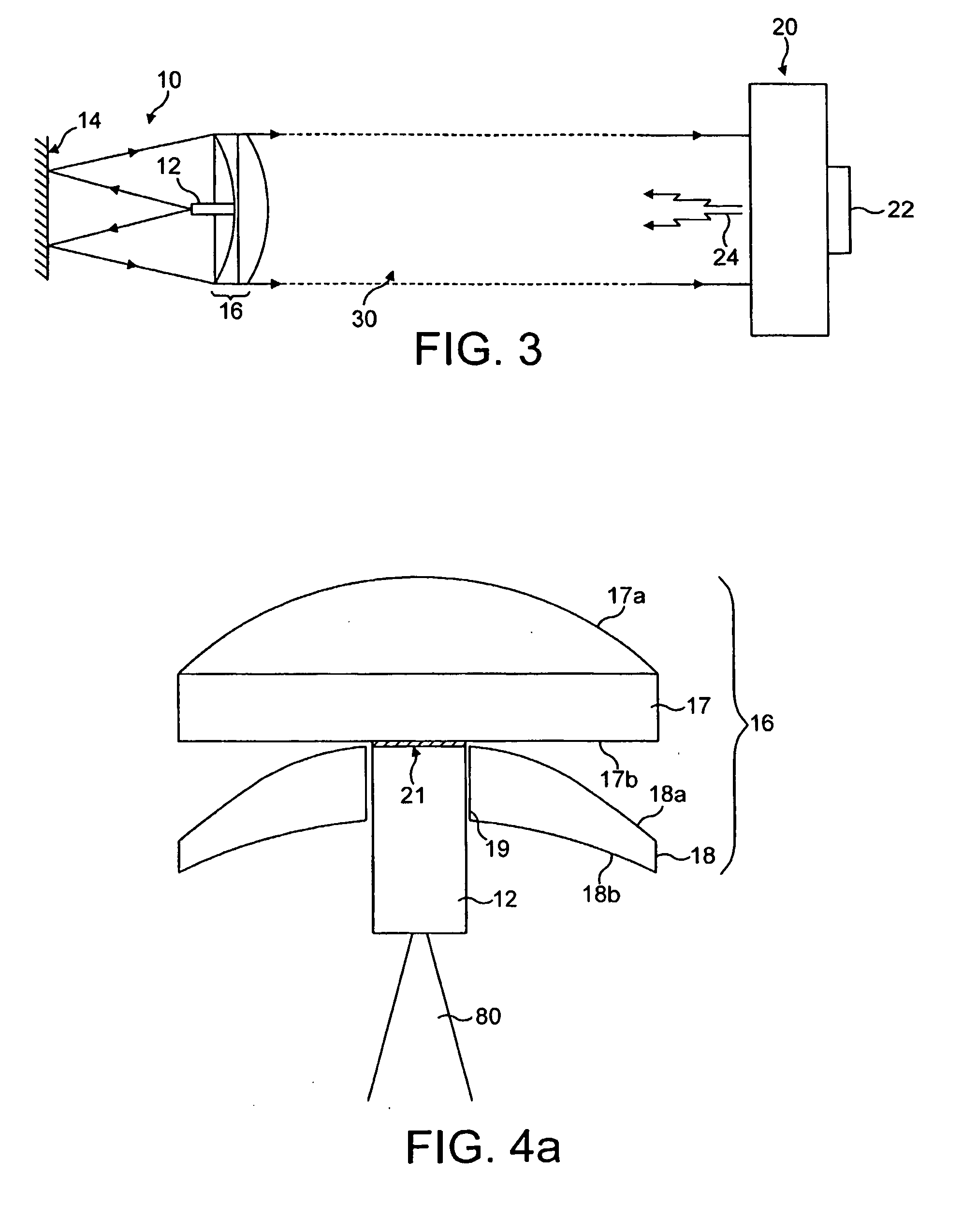Optical gas detection
a gas detection and optical technology, applied in the field of infrared gas detection, can solve the problems of infrared radiation attenuation, radiation scattering at the surface, contamination of surfaces,
- Summary
- Abstract
- Description
- Claims
- Application Information
AI Technical Summary
Benefits of technology
Problems solved by technology
Method used
Image
Examples
Embodiment Construction
[0124]FIG. 3 is a schematic representation of an open path gas detector according to the present invention, which includes a transmitter unit 10 and a detector unit 20. The transmitter unit transmits a parallel beam of radiation, which is generally denoted by the reference number 30, along a measuring path that can be a substantial length, for example 20 to 1,000 m.
[0125]The transmitter unit 10 includes a tuneable laser diode 12 that produces a beam of infrared radiation in a very narrow wavelength band that is directed rearwardly at a steerable mirror 14, that reflects the radiation towards an arrangement of optics 16 that collimates the beam reflected by the mirror to form the parallel beam 30 directed along the measurement path at the detector unit 20. The detector unit 20 includes filters (not shown) for filtering out radiation in wavelengths that are not of interest. After passing through the filters, the radiation is incident on a detector 22 that produces a signal that gives ...
PUM
 Login to View More
Login to View More Abstract
Description
Claims
Application Information
 Login to View More
Login to View More - R&D
- Intellectual Property
- Life Sciences
- Materials
- Tech Scout
- Unparalleled Data Quality
- Higher Quality Content
- 60% Fewer Hallucinations
Browse by: Latest US Patents, China's latest patents, Technical Efficacy Thesaurus, Application Domain, Technology Topic, Popular Technical Reports.
© 2025 PatSnap. All rights reserved.Legal|Privacy policy|Modern Slavery Act Transparency Statement|Sitemap|About US| Contact US: help@patsnap.com



